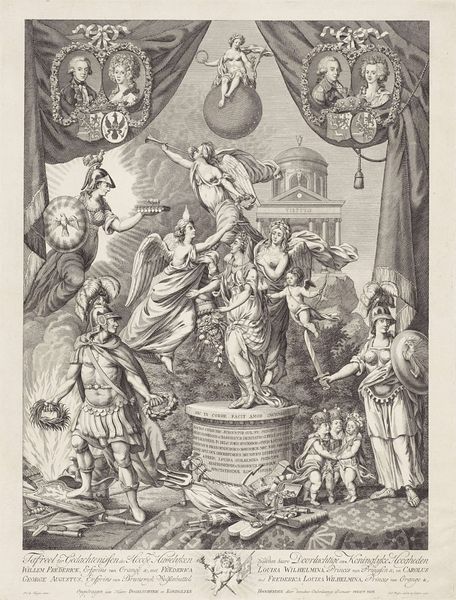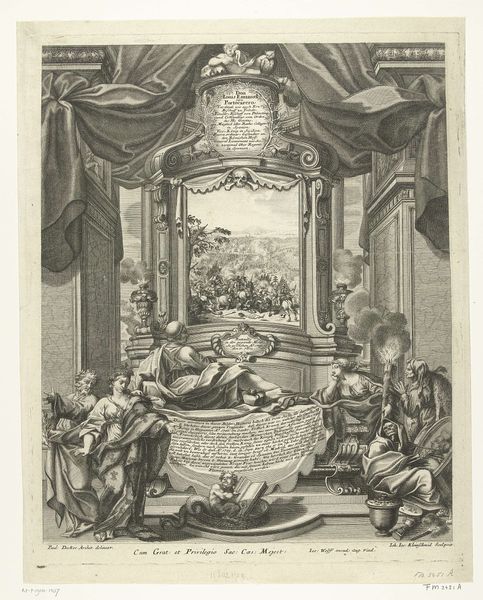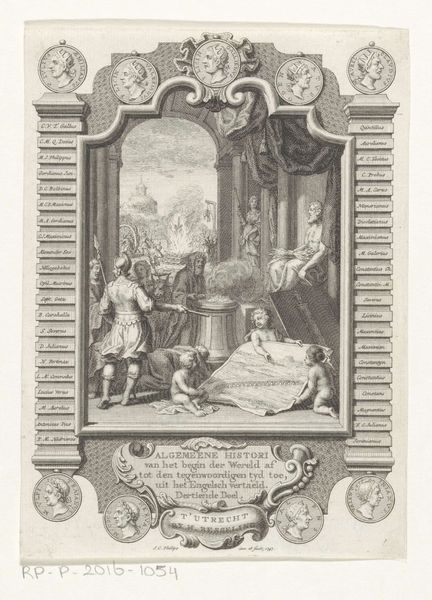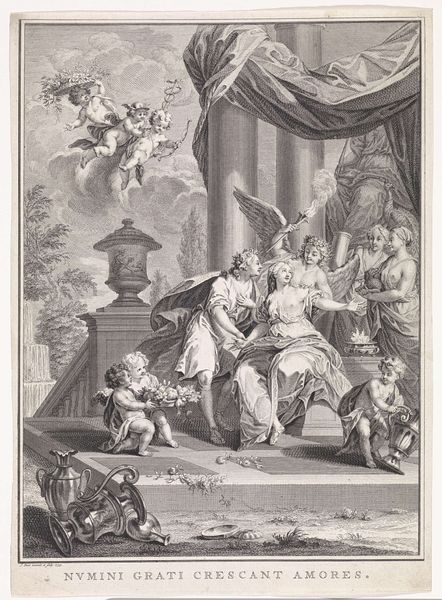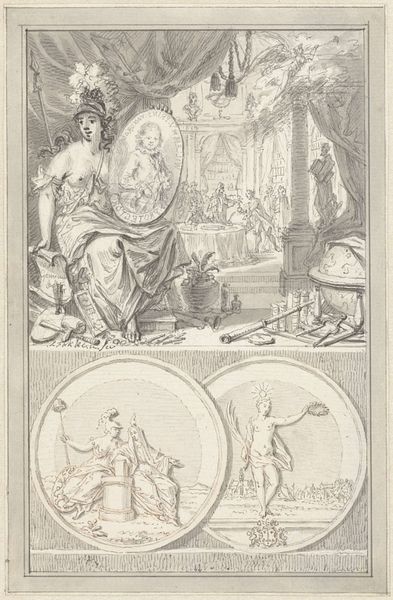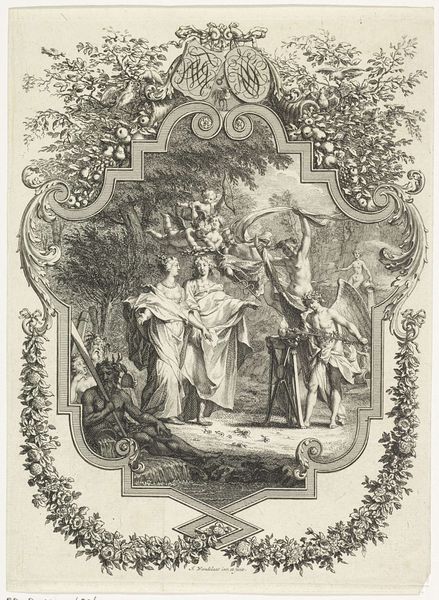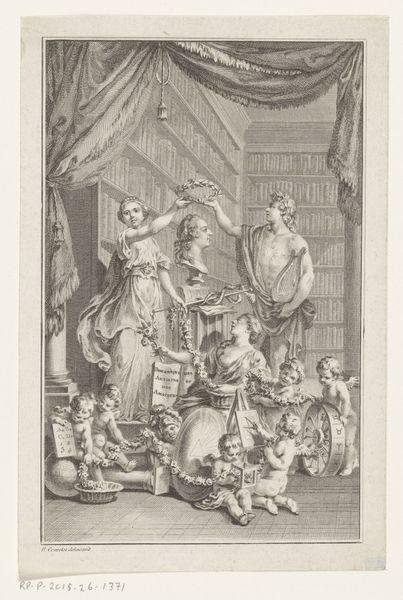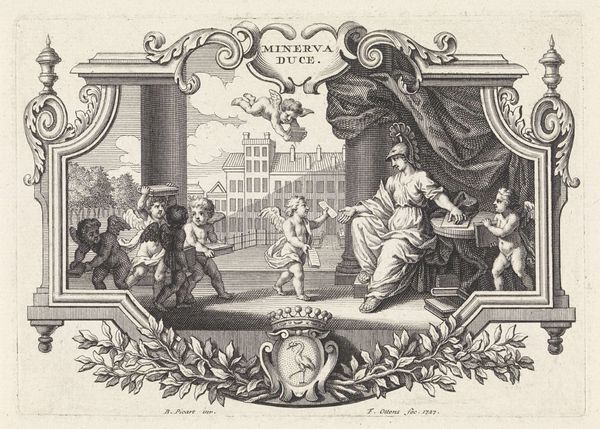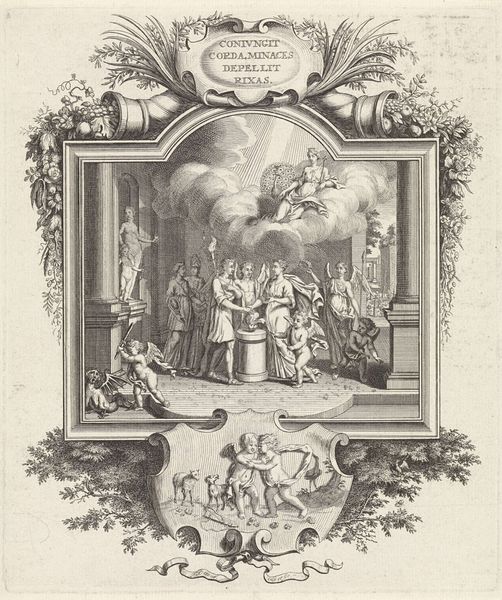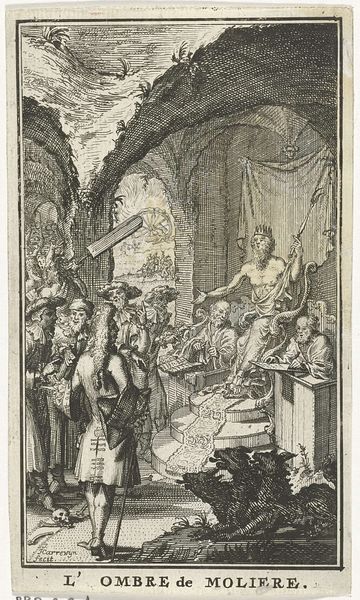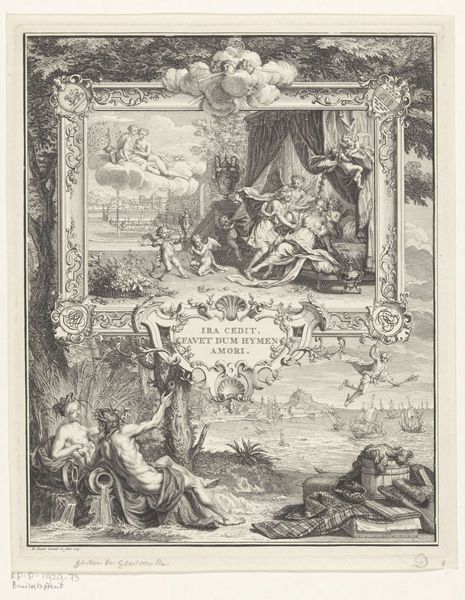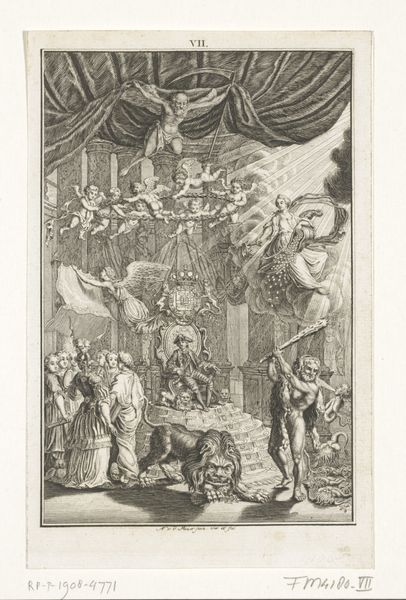
Allegorie op het herstel van de ware godsdienst in Engeland met de komst van de prins van Oranje, 1688 1688
0:00
0:00
engraving
#
allegory
#
baroque
#
figuration
#
line
#
cityscape
#
history-painting
#
engraving
Dimensions: height 668 mm, width 442 mm
Copyright: Rijks Museum: Open Domain
Curator: Well, hello there! This engraving before us, made in 1688, is by Gerard de Lairesse, a Dutch painter and art theorist from the Golden Age. It's titled "Allegory on the Restoration of True Religion in England with the Arrival of the Prince of Orange." Quite a mouthful, right? Editor: Whoa, mouthful indeed. My first thought is how chaotic and packed it is! So many figures, textures, architectural details all squished together. It's got this fever-dream vibe, a very baroque busyness! Curator: That busyness speaks volumes, actually. The engraving aims to depict a moment of profound historical and ideological shift—the so-called Glorious Revolution, and the arrival of William of Orange, invited to replace James II as King. That dense imagery, it's not accidental. Editor: Right, because nothing says political revolution like a woman in bed receiving...what exactly is she receiving? A scepter? Is that supposed to be Britannia herself, passed out from the drama? Curator: Precisely. She embodies England, awakening, if you will, with the arrival of William. His gesture is a symbol of bestowing power, bringing Protestantism and rightful governance back. Note the discarded royal regalia on the floor, symbolic of the overthrown James II. Editor: Gotcha. So the lion there…royalty, power…and then all the shadowy figures to the left, looking…anguished? Are they symbolic too? Curator: Yes, they are allegorical representations of oppressed virtues and perhaps even dissenting religious factions liberated by William’s arrival. De Lairesse is offering a particular political reading of the time. See how a figure above is blowing a horn to call others in? The piece champions the rise of Protestantism and the establishment of a constitutional monarchy. Editor: It feels intensely propagandistic now that you point it out. Like a Baroque political cartoon. A really detailed, kind of unsettling cartoon. Curator: Absolutely. These visual statements, during that time, played a critical role in shaping public perception, and in solidifying William’s reign. It speaks to how intertwined politics, religion, and art were during the era. Editor: It makes you wonder about the "truths" being told, doesn’t it? What version of events is deliberately left out or embellished. Still, what incredible craftsmanship in an engraving, imagine the hand skills that this requires. Curator: That level of detail in this work certainly leaves a lasting impression. It encourages one to dive deeper into the contexts of this period of immense socio-political upheaval, both then and its enduring presence today. Editor: Right, it is like art history shouting, "Consider the source," and then whispering, "but isn’t it beautifully rendered?"
Comments
No comments
Be the first to comment and join the conversation on the ultimate creative platform.
